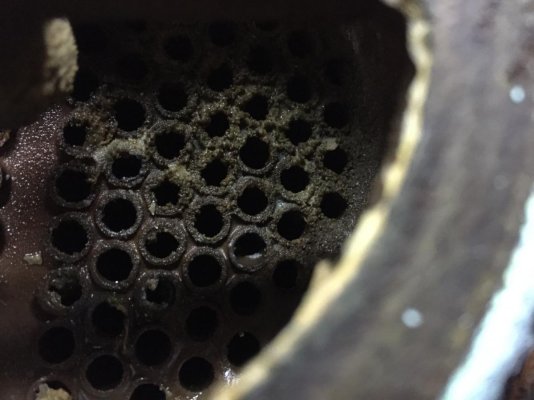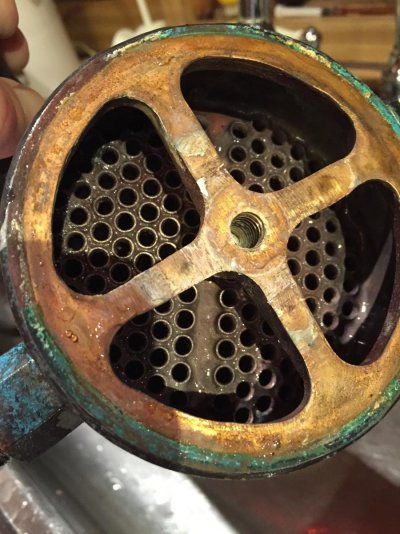OK, finished the RW flush on both sides with a detour off to fix an elbow connection covered in another thread. Looked at HE (no tubes blocked but some gunk) and oil cooler (no pieces of anything). Took the boat out yesterday and both engines it ran at 180 degrees for a couple of hours no problem. Decided to test out WOT. The starboard engine went up to 190 degrees and stayed there. Although it took longer than the first time the port engine kept going and I backed off at 200 when the alarm sounded. Assuming an increase from 180 to 190 at WOT is within reason it had a positive effect on the starboard side but not on port. Again, new impellers, strainers clear visually, bottom just cleaned last week, and now system flushed. I guess I go back to square one and start with opening up strainer and then hose to pump. Make sure I am getting full flow of water. Maybe change port impeller again in case there is something funky there? This was the impeller that sat installed for a week or so before I opened up seacock and ran after replacement. Don't know why that would affect it though. Will also search old paperwork to see if water pumps were replaced at some point by the PO. Engines have 4,190 hours and if these are the original pumps maybe time to replace? I don't what "normal" hours before replacement are on these?


